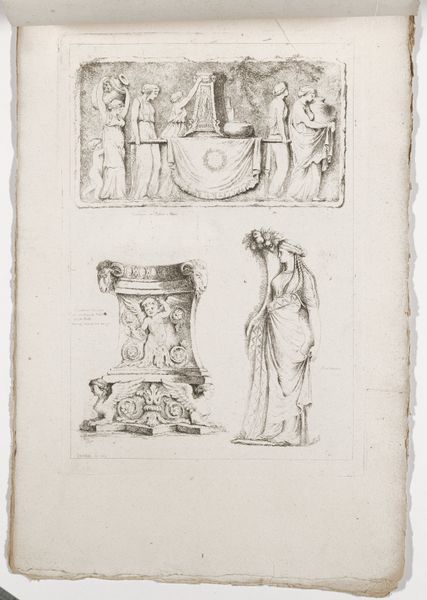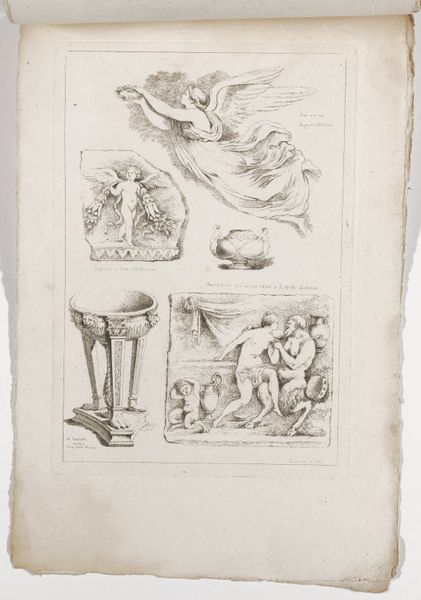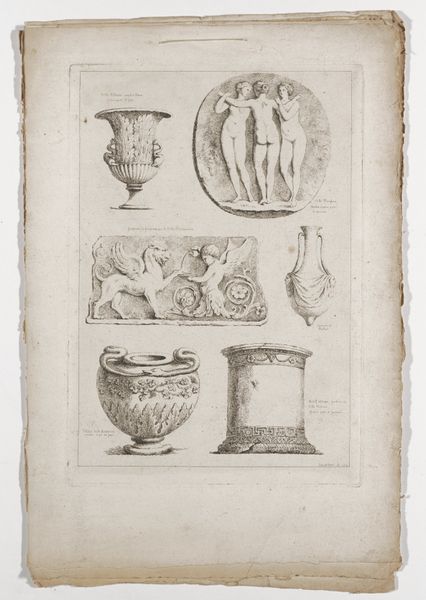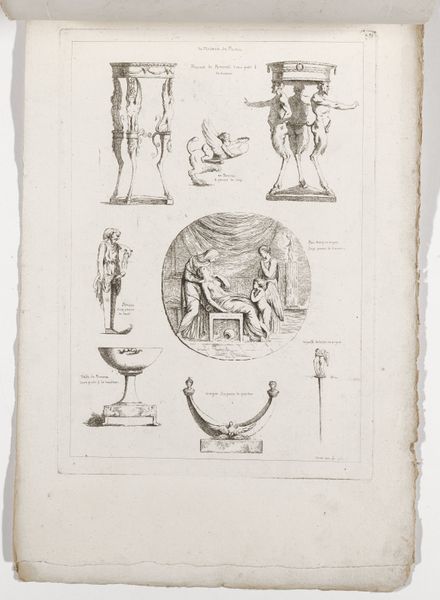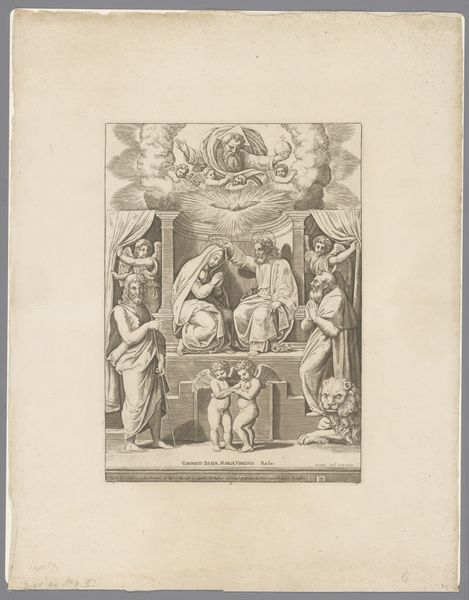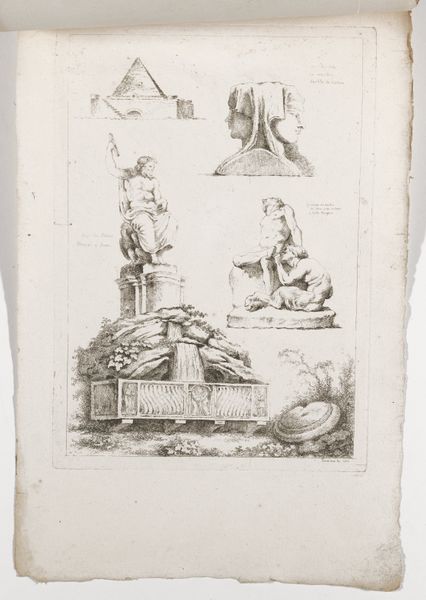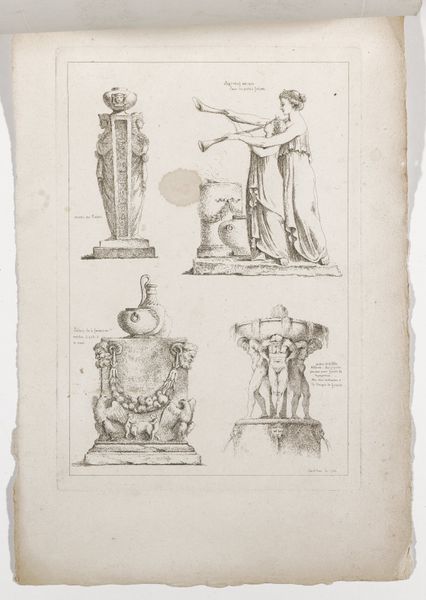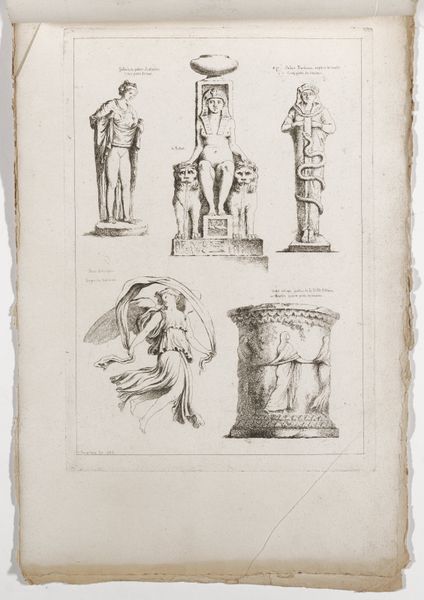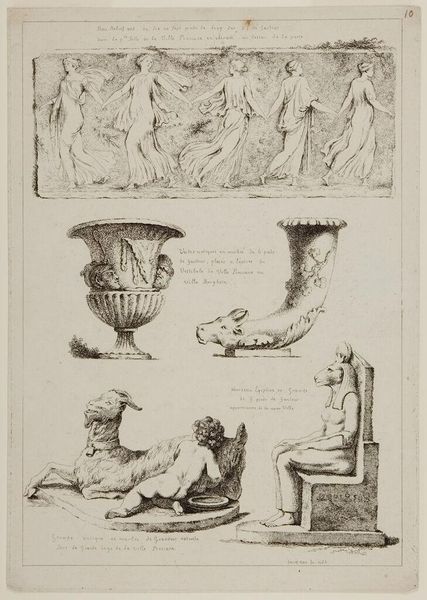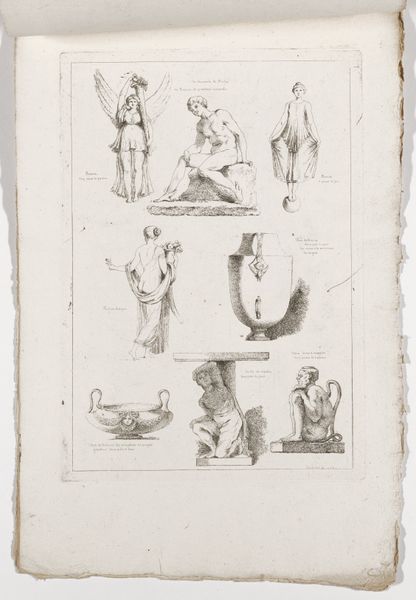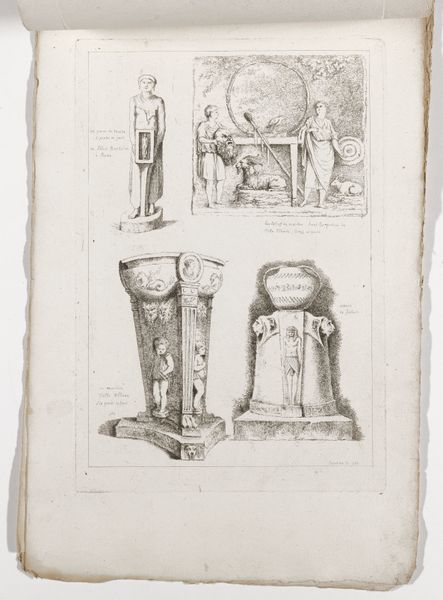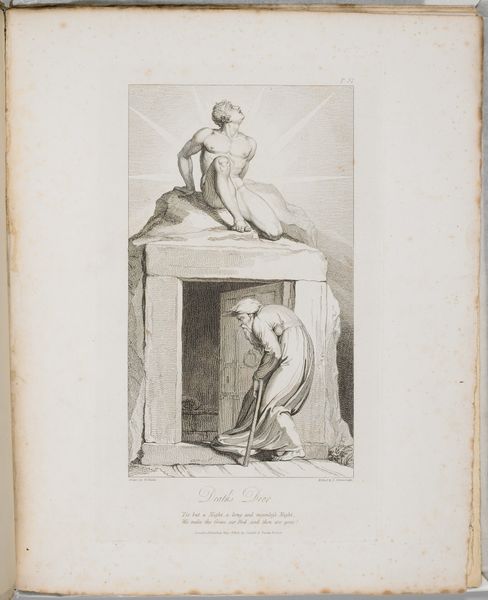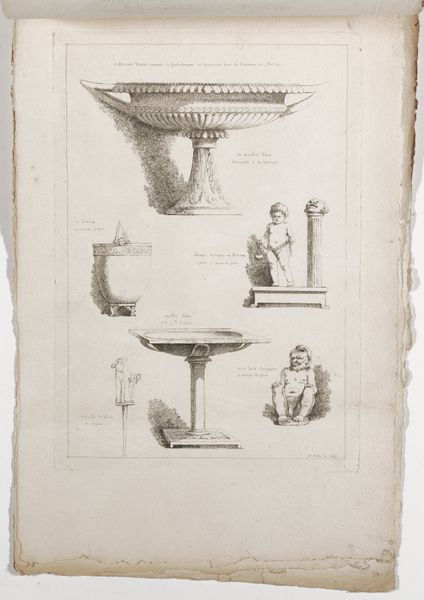
drawing, print, etching, ink
#
drawing
#
ink painting
# print
#
etching
#
classical-realism
#
etching
#
ink
#
ancient-mediterranean
#
history-painting
Dimensions: 12 11/16 × 8 3/4 in. (32.23 × 22.23 cm) (plate)17 × 11 5/16 in. (43.18 × 28.73 cm) (sheet)
Copyright: Public Domain
Editor: Here we have "Fascicule I", created around 1763 by Jean Claude Richard, Abbé de Saint-Non. It's an ink and etching print, quite delicate. There's something very neoclassical about the rendering of what appears to be historical artifacts… what catches your eye in this work? Curator: For me, it’s how this print embodies the labor of reproduction and dissemination of knowledge in the 18th century. We’re not just looking at copies of ancient objects; we're witnessing the process of turning material culture into portable, reproducible images. What impact would accessibility have on shaping aesthetic taste and social values in this period? Editor: So, the focus is less on the artistic merit of the drawings themselves and more on their role as a vehicle for making these ancient images widespread? Curator: Exactly! Consider the etching process itself – the skilled labor involved in translating three-dimensional objects into a two-dimensional, easily distributed format. Think about the societal context, where printed materials facilitated the democratization of art appreciation to some degree. What did such image proliferation do to art valuation, do you think? Editor: It's fascinating to think of these images circulating, influencing design and sparking new ideas. Almost a pre-internet sharing of art! Did that undermine more "unique" works of art? Curator: It’s not necessarily about undermining, but certainly about challenging traditional boundaries. How can we redefine “originality” and “artistic value” when considering the impact of reproductive technologies like printmaking, particularly with regard to material considerations and labour? Editor: That gives me a new way to consider the value of reproducible media and its democratization of art and knowledge! Thank you. Curator: My pleasure. Seeing art's circulation and labor can alter the conversation entirely.
Comments
minneapolisinstituteofart about 2 years ago
⋮
The Jean-Baptiste Claude Richard (also known by his title abbé Saint-Non) embodied the important role of the amateur, an patron and connoisseur of the arts as well as a practitioner in 18th-century France. He was a skilled networker, a curious, innovative printmaker, and he supported his artist friends in their projects and travels. Saint-Non executed this suite of prints in Paris in 1763, representing antique fragments and reliefs he saw during his travels in Italy from 1759 to 1761. Most of the monuments are identified in the inscriptions by their locations in Rome. The works reflect French artists’ fascination with antiquity at the time, and the way in which these sources were transmitted to a larger public through the circulation of prints. Remarkably the suite of etchings remain as originally issued, in three groups of six deckle-edged sheets stitched together simply along the top edge.
Join the conversation
Join millions of artists and users on Artera today and experience the ultimate creative platform.
